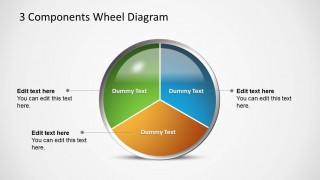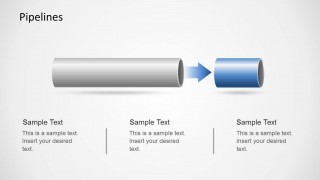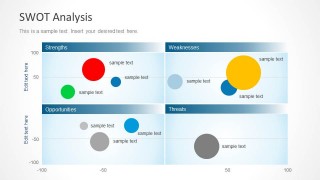Learn more how to embed presentation in WordPress
- Slides
- 19 slides
Published Oct 13, 2013 in
Education
Direct Link :
Copy and paste the code below into your blog post or website
Copy URL
Embed into WordPress (learn more)
Comments
comments powered by DisqusPresentation Slides & Transcript
Presentation Slides & Transcript
The Present Progressive (Continuous) Tense in English
How to form the present progressive:The 'present progressive' tense in English is very easy to form and is the same for all verbs.Subject + the present simple form of the verb to be + the -ing form of a verb(present participle).I am running.
Remember!The present simple tense has a number of contractions and these can also be carried over to the present progressive tense:I am I'mHe is He'sShe is She'sIt is It'sWe are We'reThey are They're
Affirmative SentencesSubject + the present simple form of the verb ‘to be’ + the –ing form of a verb (present participle)Full form Short (contracted) formI am + eating. I'm eating.He is + walking. He's walking.They are + running. They're running.We are + laughing. We're laughing.
Your turn!Make affirmative sentences in the ‘present progressive’ tense using the given parts of the sentence below.Eg: I + to be + to eat + chocolate chippie biscuits.I am eating chocolate chippie biscuits.You + to be + to walk + on the beach.She + to be + to cry + loudly.They + to be + to dance + at the party.We + to be + to swim + in the pool.
Did you say? …..You are walking on the beach.She is crying loudly.They are dancing at the party.We are swimming in the pool.If you did, well done!
Negative SentencesSubject + the present simple form of the verb ‘to be’ + not + the –ing form of a verb (present participle)Full form Short (contracted) formI am + not + eating. I'm not eating.He is + not + walking. He's not walking.They are + not +running. They're not running.We are + not +laughing. We're not laughing.
A different contraction Sometimes, in negative sentences, the ‘to be’ and the ‘not’ part of the sentence is contracted.He’s + not + walking. He isn’t walking.She’s + not + walking. She isn’t walking. They aren’t +running. We aren’t +laughing.
How to form questionsFor questions that can be answered with a simple 'yes' or a 'no':The present simple of the verb ‘to be’ + subject + the –ing form of a verb (present participle) Am + I + eating. Are + you + walking. Are + they + running. Are + we + laughing.
Your turn!Change the following statements to questions:They are travelling to Costa Rica.He is reading a book.We are surfing on the waves.I am preparing dinner.
Did you say? …..Are they travelling to Costa Rica?Is he reading a book?Are we surfing on the waves?Am I preparing dinner?If you did, then you did very well!
Forming 'wh' and 'how' questions:Just like the previous questions but with the 'wh' or 'how' question word at the beginning of the sentence.A ‘wh’ or ‘how’ question word + the present simple of the verb ‘to be’ + subject + the –ing form of a verb (present participle) What am I eating?Why are you walking?Who are you meeting?When are you leaving?How are you travelling?
When to use the present progressive tense1: For things that are happening at the moment of speaking.I’m eating my dinnerI'm working right now.The baby is crying.You are reading an article on English grammar.
2: For temporary situations (when we know/feel that something won't continue for a long time), they don't have to be happening right this instance, but they will be happening around now.She’s just filling in for Rob until he gets back from Fiji.(Phrasal verb: filling in for = replacing, often means that someone is doing a job in someone’s place)I’m driving this car until I get my new one.I’m reading a really exciting book.NB: This is the opposite of the present simple, which is used for permanent situations that we know/feel will continue for a long time.
3: For new or temporary habits, or for actions that aren’t usual(NB: for normal habits that continue for a long time, we use the present simple). She’s exercising every morning (this is new, she’s just started doing this).You’re working too hard.They’re working late every night.She's seeing that new guy Juan.He’s not eating much these days.
4: For annoying habits often used with adverbs such as ‘always’ / ‘forever’ / ‘constantly'. This use is good for when we want to show that something happens too often and we don't like it. You’re always using that excuse!She’s constantly late for work.He’s always sleeping late.They’re forever arguing.
5: For planned future arrangements (with a future time word). I’m going shopping with Maria tomorrow.I'm meeting my boyfriend after work.We’re going to the beach on the weekend.I’m leaving at five o'clock.They’re coming to the party on the weekend.
6: To talk about a situation which is slowly changing.The children are growing up. I’m getting better at playing squash. The weather is improving.
Just remember one more important thing, the present progressive (or any other continuous tense) can not be used with stative verbs. Go here … http://learnenglishspanishonline.com/english-stative-verbs/to learn what ‘stative’ verbs are. So now you should be ready to use the English Present Progressive Tense!
More Presentations

By thelanguagetutors
Published Sep 25, 2013

By thelanguagetutors
Published Oct 3, 2013

By thelanguagetutors
Published Oct 9, 2013

By thelanguagetutors
Published Oct 13, 2013

By thelanguagetutors
Published Oct 13, 2013

By thelanguagetutors
Published Nov 17, 2013

By thelanguagetutors
Published Nov 17, 2013





